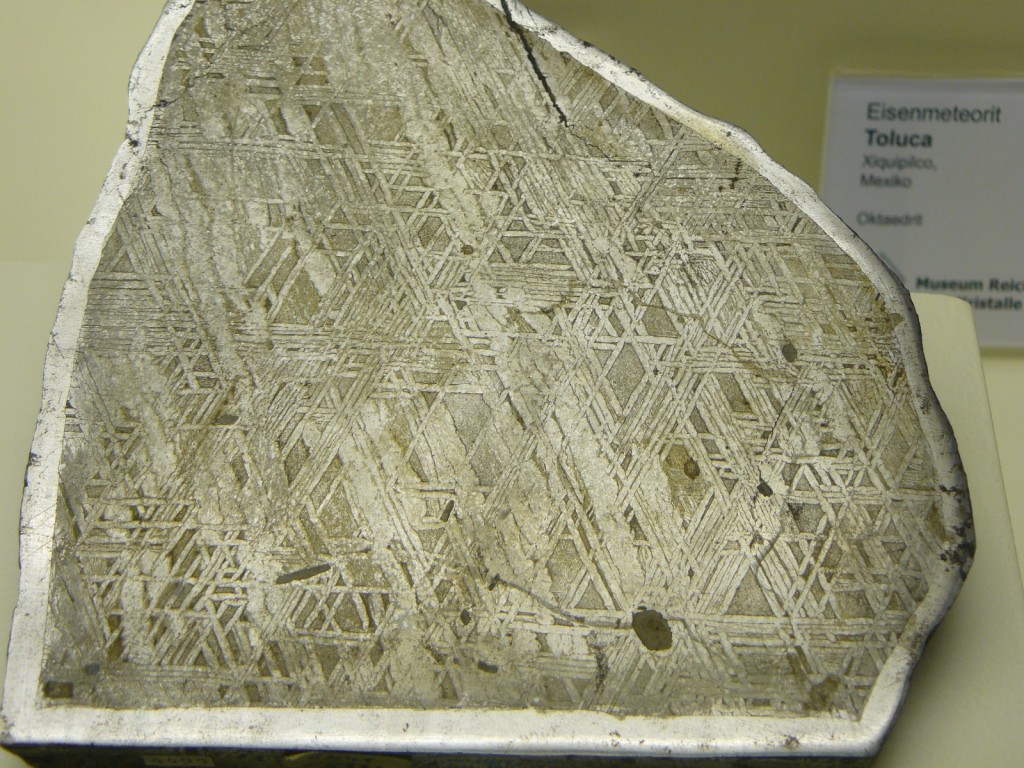This week’s photo is brought to you from outer space! Indeed, this a beautiful cut section of a meteorite that fell in northwest Australia and was found in 1892 (ignore the label behind it). It is an iron-nickel meteorite and is composed entirely of metal. This crazy cross-hatching, which is most commonly found in such iron-nickel meteorites, is called a Widmanstätten pattern.
Widmanstätten patterns, also known as Thomson patterns, are revealed only when the meteorite is cut, polished and acid etched. The patterns formed when the meteorite cooled and only do so if the meteorite cooled very slowly i.e. over millions of years.
First, when the meteorite is hot the entire thing is mono-crystalline and is formed of an Fe-Ni phase called taenite. However, as a it cools another phase develops called kamacite (low Ni) which grows within the existing taneite (high Ni) lattice resulting in the Widmanstätten pattern.

Iron meteorite found in Roeburne, Hammersley Range, NW Australia. This piece is exhibited in the Museum Reich der Kristalle, Munich, Germany by Konstantinos Kourtidis
